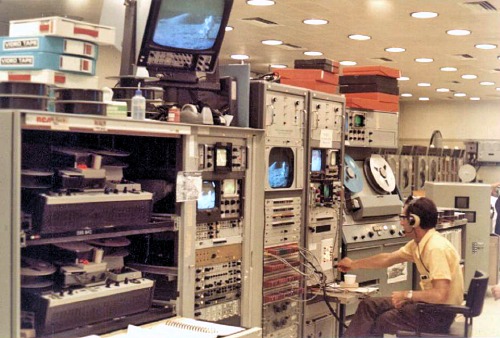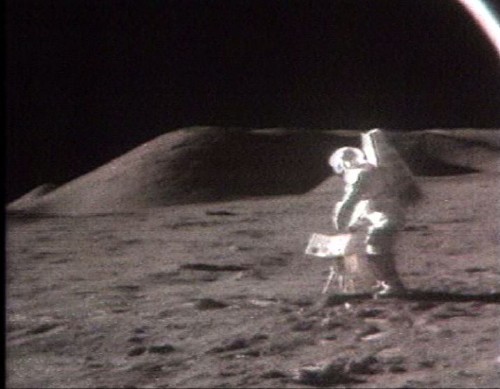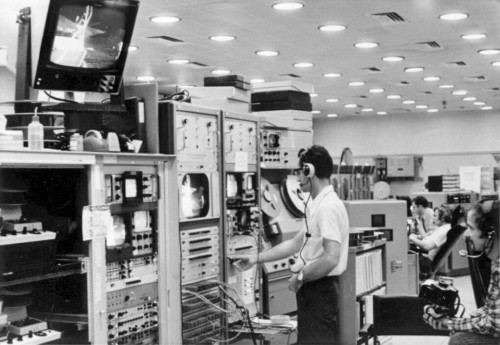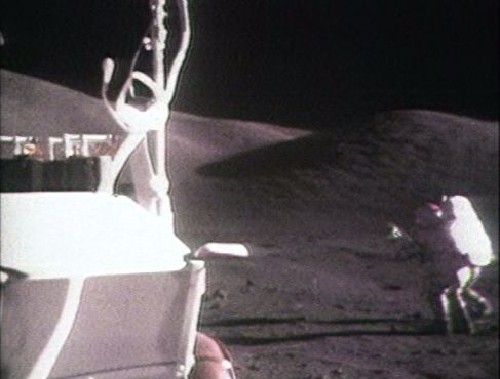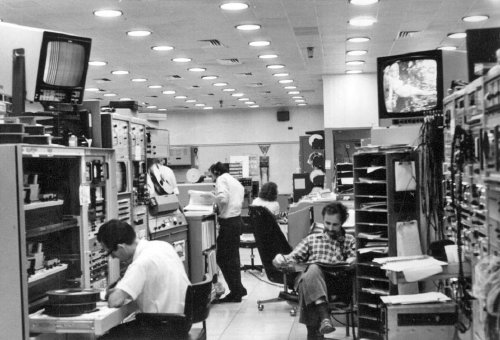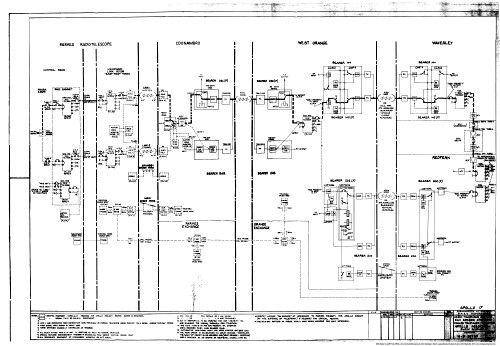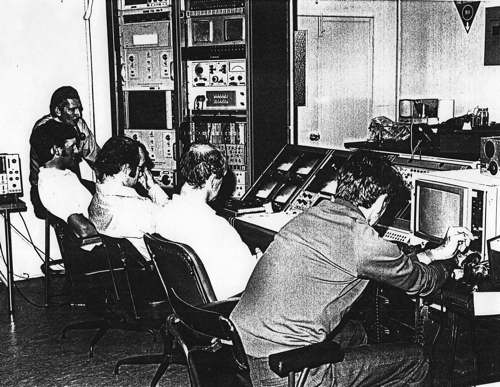While little live TV from Apollo 17 was shown on US networks, the Australian television networks (notably the ABC) provided extensive coverage. (The Australian Broadcasting Commission’s radio coverage was anchored by Peter Pockley. The TV coverage was anchored by Clive Robertson.) Photo: Colin Mackellar, 1972. |
Honeysuckle Creek video section during Apollo 17
Honeysuckle Creek Test Equipment Supervisor Nevil Eyre in the video section during Apollo 17. Polaroid photo scanned by Ed von Renouard. |
 |
Corrected view by Mike Dinn. |
And this is the scene that was on the monitor – Apollo 17, EVA 1, Jack Schmitt setting up the SEP (Surface Electrical Properties Experiment) at 123:07:30GET. With thanks to Ian Regan for finding the video segment. This screenshot is from Mark Gray’s Apollo 17 DVD set. |
Another photo of Nevil Eyre at the video equipment during Apollo 17 EVA 1 – about the same time as the photo below. From a Polaroid scanned by Nevil Eyre. |
Nevil Eyre at the video racks, near the start of the Apollo 17 EVA 1 – at 122:25:48GET. Polaroid by Ed von Renouard, scanned by Nevil Eyre. |
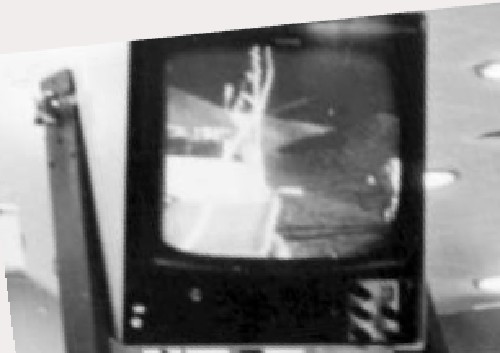 |
And here’s a deskewed picture of the monitor. |
And this is the scene that was on the monitor – from the first Geology station, near Steno crater. |
From left: Nevil Eyre, Bill Perrin (standing), Evonne Vey ? (seated, back to camera) and Les Paal. Photo: Ed von Renouard. |
Hard working recorder people John Vanderkly (on left) and Brian Hale during Apollo 17. Photo: Ed von Renouard. |
Parkes to Sydney
Schematic of the TV and telemetry links from Parkes to Redfern (Sydney) for Apollo 17. Large (780kb). Larger (2.3MB). (Gordon also preserved the schematic for Apollo 11 on this page.) |
Sydney Video – now in the TOC, Castlereagh Street
Sydney Video at City South Telephone Exchange, 219 Castlereagh Street at the time of Apollo 17. Photo via Mike Dinn. Scan by Colin Mackellar. |


